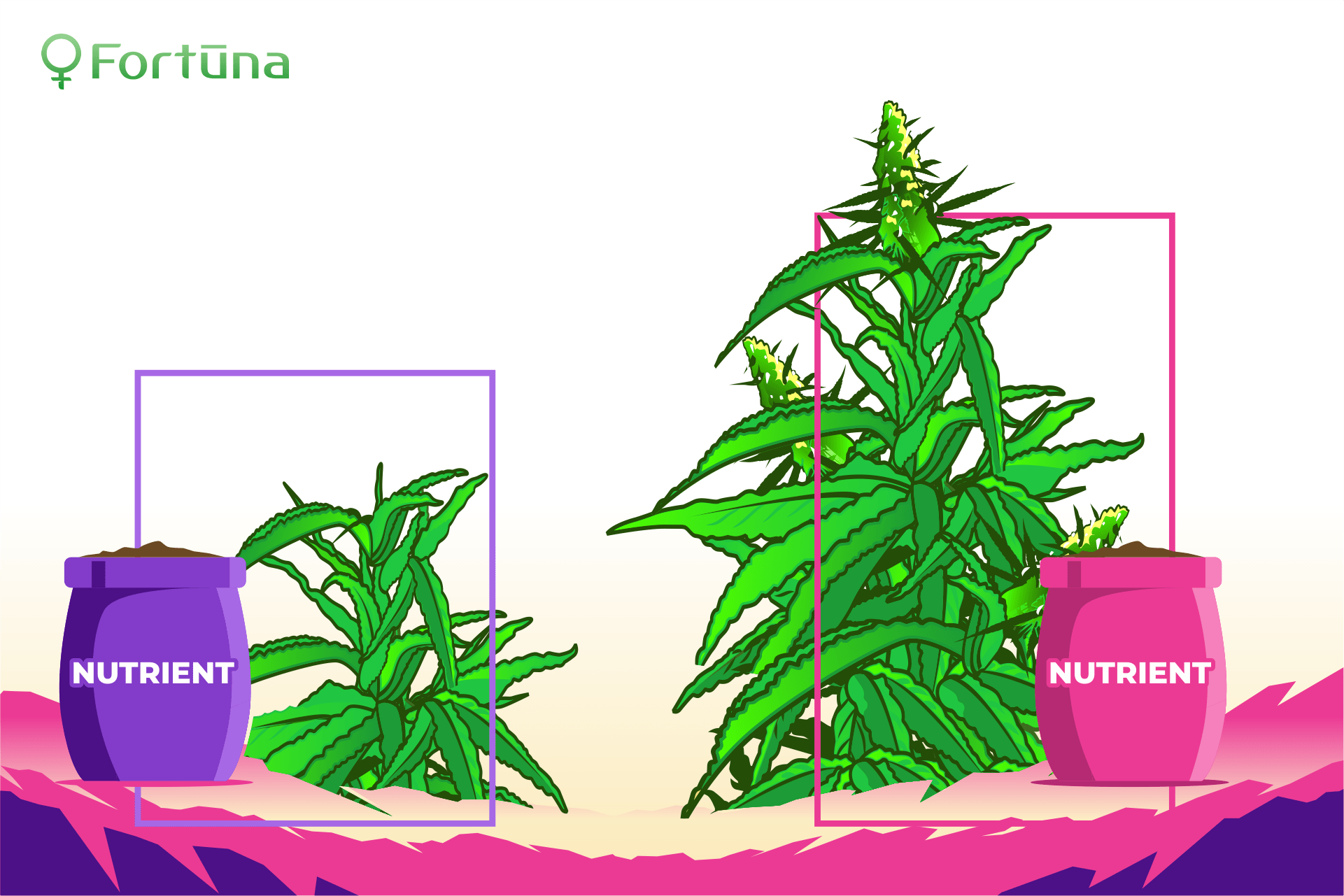
- Guides
-
by gu
Hemp nutrient demands change as the plant develops. Hemp demands a different nutritional profile while it’s “vegging” compared to when it’s flowering. Understanding and modifying hemp nutrients based on growth stage helps ensure the plants grow to their fullest potential during each phase. Today, we’ll explain different hemp nutrients and briefly discuss how to adjust them during all stages of hemp plant development.
Understanding Hemp Nutritient Demands
Essential hemp nutrients include more than 20 mineral elements. These minerals make up two sub-groups: macronutrients and micronutrients. Macronutrients are the most critical for overall plant health and require regular applications to keep up with hemp nutrient demands. Micronutrients are also essential but are used in far lesser quantities and therefore need less frequent re-application.
Of all the macronutrients, the most vital to photosynthesis are nitrogen (N), phosphorus (P), and potassium (K). Most standard nutrient solutions contain a combination of these three elements listed in order (NPK) to represent the concentrations of each component. For example, whereas a solution of 3-3-3 suggests it contains equal parts nitrogen, phosphorus, and potassium. Conversely, a 6-4-4 solution suggests the solution includes six parts of nitrogen and four parts of both phosphorus and potassium. These ratios are especially important when planning and preparing hemp’s nutritional needs by stage of growth.
Other macronutrients for growing hemp include calcium, sulfur, and magnesium. Watch lower leaves for signs of hemp nutrients deficiency and refer to a hemp diagnostic guide at the first sign of stress.
Growing hemp requites lower and less frequent micronutrient applications. Generally, the less common in nature, the less vital the mineral is to plant growth. Be that as it may, micronutrients serve their own unique – and essential – roles in healthy hemp plant development.
The Importance of Proper pH
Without proper soil pH, plants could experience lockout, thus blocking them from absorbing valuable nutrients. The ideal pH level for CBD hemp is between 5.5 and 7, though a pH level between 6.0 and 6.5 is best. Always remember to check soil acidity to ensure hemp plants can efficiently absorb and metabolize fertilizers.
Amend alkaline soil (above 7pH) by adding aluminum sulfate, elemental sulfur, iron sulfate, acidifying nitrogen, sphagnum peat, or organic mulches. Conversely, limestone or wood ash raises the pH of overly acidic soil (below 5.5pH).
Hemp Nutrient Demands by Growth Stage
As a hemp plant develops, so must its nutritional regimen. Below is a brief explanation of the variable hemp nutrients by stage of growth.
Germinating Seedlings
Seedlings don’t need much to grow – just a warm, soft bed of soil and enough moisture to soften the seed shell. Giving young seedlings hemp nutrients (more than what might naturally occur in your soil or grow medium) could shock the fragile youth causing it to wild or otherwise suffer.
The best time to start seedlings on a nutritional diet is when they have at least three nodes or fan leaves. Adding nutrients any time before this could shock the plant and adding them afterward could result in deficiencies and stunted growth.
Seedlings do not need high concentrations of hemp nutrients, either. When first starting seedlings on a “nute” regimen, use only one-half to one-quarter the recommended strength of a 3-3-3 nutrient solution. In other words, use fertilizers that contain equal parts of nitrogen, phosphorus, and potassium (NPK) – just go easy on them for the first few weeks.
Vegetative Growth
Vegetative growth is when hemp plants develop most of their size and structure. This is an essential time in CBD hemp development as it gives the plants time to establish strong roots and stems with which to bear the weight of future flowers. This stage of hemp growth usually takes between two weeks and two months to complete.
Hemp nutrient demands during the vegetative growth stage require more nitrogen than either phosphorus or potassium. The reason for this is because nitrogen gives the plant strength and structure. Consider using about 200 parts-per-million of nitrogen, 120 ppm of phosphorus, and 200-250 ppm of potassium. The following will help explain why.
Early Flower
The early flowering stage of CBD hemp growth requires the addition of calcium and magnesium along with a subtle drop in nitrogen. This will help the plants sturdy themselves, build a robust root system, and prepare for the weight of dense flowers.
Late Flower
Late flower occurs roughly five weeks into the CBD hemp flowering period. By this time, nitrogen concentrations of hemp nutrients should be about two-thirds the strength of phosphorus and potassium. 125ppm of nitrogen is adequate during late flower to promote dense bud development. Maintain this regimen for about four weeks.
Pre-Harvest
Many growers insist on flushing their cannabis plants before harvest. To be clear, flushing simply means watering the plants with plain water. The process forces them to consume any residual minerals thus improving flavor and harshness of the smoke. There is debate regarding the usefulness of this practice, though, and may not be practical in all cases. Whereas small, indoor hemp growing areas may benefit from flushing plants a few weeks before harvest, large fields and impending bad weather may prove too difficult. It is up to you to decide whether or not to flush your CBD hemp plants before harvest.
Final Thoughts About Hemp Nutrient Demands by Growth Stage
Understanding hemp nutrients by growth stage will help ensure your feminized CBD seeds have everything they need to grow strong and bountiful. To learn more about CBD hemp or our hemp cultivation consultation services, contact us.

